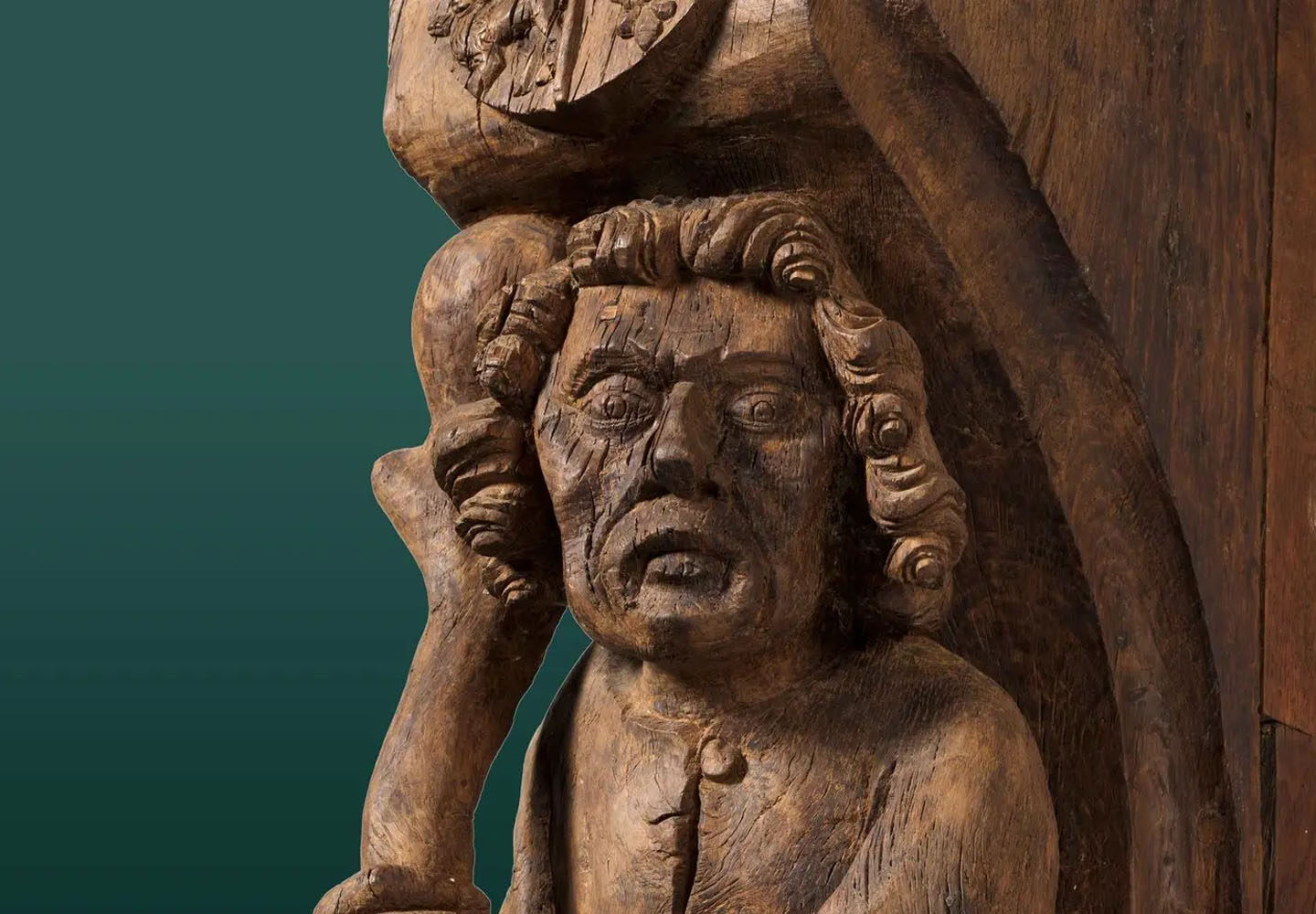Exhibition Details
Below the monarch, nobility, and land-owning gentry in the highly stratified society of sixteenth-century England stood those known as the “middling sort.” Like their compatriots of higher rank, they too saw art and architecture as a means of self-fashioning.
This exhibition examines the emergence of distinctly middle-class taste in late medieval England by showcasing a rare set of large-scale domestic sculptures from Exeter. Commissioned by a merchant named Henry Hamlyn, the sculptures, which adorned the exterior of his house, feature stock characters drawn from popular prints and bawdy tales: a jester, a quarreling couple, peasants, and musicians. Rustic in style and subject matter, they fascinatingly came across as figures both amusing and menacing.
This exhibition examines the emergence of distinctly middle-class taste in late medieval England by showcasing a rare set of large-scale domestic sculptures from Exeter. Commissioned by a merchant named Henry Hamlyn, the sculptures, which adorned the exterior of his house, feature stock characters drawn from popular prints and bawdy tales: a jester, a quarreling couple, peasants, and musicians. Rustic in style and subject matter, they fascinatingly came across as figures both amusing and menacing.
Additional Details
With over fifty works, including textiles, prints, furnishings, and other decorative arts, Rich Man, Poor Man explores why Hamlyn might have been drawn to such imagery. It also highlights how the home, both inside and out, could serve as a form of individual self-expression and a statement of social order.
Location
The Metropolitan Museum of Art
1000 5th Ave
New York, NY 10028
Image: courtesy of The Met


